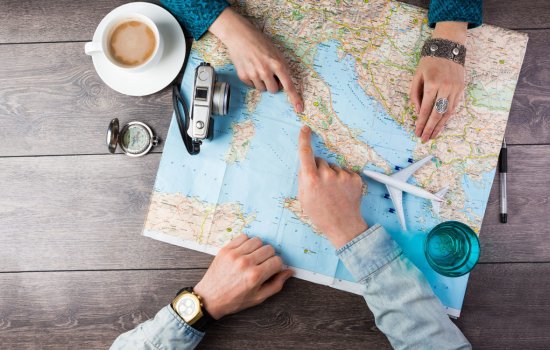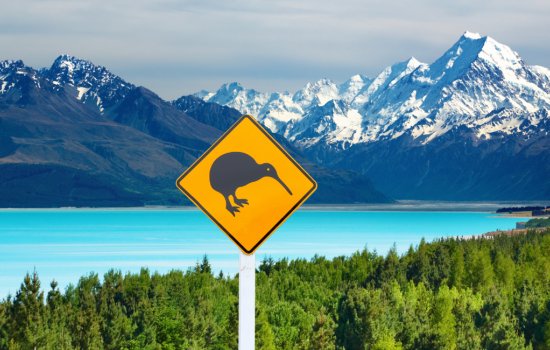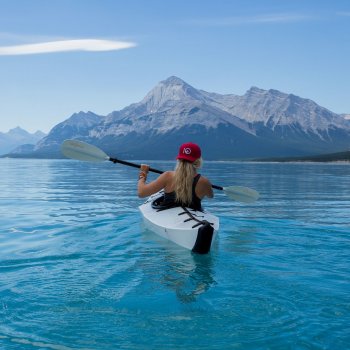WHERE? WHEN?
The Best Time to Travel: When to Plan Your Dream Adventure
The world is vast, diverse, and packed with incredible experiences—but let’s be real, timing is everything. The perfect trip isn’t just about where you go; it’s about when you go. Seasons can make or break an experience, whether you're chasing the Northern Lights in Norway, the Great Migration in Africa, or Japan’s iconic cherry blossoms.
Over the years, I’ve learned (sometimes the hard way!) that travelling at the right time can mean fewer crowds, better weather, and even big savings. So, here’s my guide to help you decide when to visit different regions of the world—because every adventure deserves the perfect backdrop.
Africa’s seasons flip compared to Europe and North America, so if you’re planning a safari, it’s good to know what to expect. In general:
- Best for wildlife: September–October & March–April
- Great Migration (Kenya & Tanzania): July–October
- Avoid rainy season: April–May (East Africa)
I’ve done safaris in both peak and off-peak seasons, and honestly? Shoulder seasons (just before or after peak months) are my favourite. The landscapes are lush, the animals are still active, and you won’t be jostling for space at every lion sighting.
There’s only one time to visit Antarctica—November to March. That’s when the ice starts breaking up, the wildlife is most active, and you get near-endless daylight. Think penguins waddling right up to you, massive icebergs, and the kind of scenery that makes you feel like you’ve landed on another planet.
The Arctic is a completely different beast. What you see depends entirely on when you go:
- Midnight sun & warmer weather: May–September
- Northern Lights (best chance!): October–March
I made the mistake of visiting Iceland in May once, hoping for the Northern Lights. Rookie move! Turns out, the sky never got dark enough. Lesson learned—if you want to see the aurora, winter is your best bet.
Asia’s weather is all over the place, so planning is key.
- Japan & Korea: Cherry blossoms (March–April) | Autumn colours (October–November)
- Southeast Asia (Thailand, Vietnam, Cambodia, etc.): Dry season (November–April) | Green but humid (May–October)
- India & Sri Lanka: Best from October–March | Himalayan treks are great in summer (April–June)
One of my favourite travel memories? Watching the sunrise over Angkor Wat in December. No crowds, just golden light spilling over the temple ruins. Absolute magic.
For the best weather without the crazy crowds:
- Australia: Spring (Sept–Nov) & Autumn (March-May) are ideal
- New Zealand: Autumn (April–May) is unreal—golden forests, crisp air, and fewer tourists
Summer (Dec–Feb) is great for beaches, but if you’re headed inland, brace yourself—it gets hot.
It all depends on where you're headed:
- Central America: January–March is dry and sunny
- South America: April–June (fewer crowds, pleasant temps)
- Amazon Rainforest: June–November is the "dry" season (though, let’s be honest, it’s never truly dry there)
Even in the rainy season, don’t let the word “rain” scare you—it often just means quick afternoon showers that actually cool things down.
Europe is gorgeous year-round, but if you want the best mix of weather and fewer crowds:
- Spring & early summer (April–June): Perfect for sightseeing, beaches, and fewer tourists
- Fall (September–October): Golden light, harvest festivals, and cooler weather
- Winter (December–March): Christmas markets, skiing, and cozy vibes
Mediterranean summers (July–August) are scorching and packed with tourists, so if you can, aim for shoulder seasons.
The Middle East gets hot in summer, so the best travel months are:
- Spring (March–May) & Fall (Sept–Nov): Comfortable for exploring
- Winter (Nov–March): Great for places like Dubai, where summer is unbearably hot
I once visited Jordan in August… big mistake. Petra was stunning, but hiking through it in 42°C (108°F) heat? Never again.
The U.S. and Canada cover so many climates, so here’s a quick breakdown:
- National Parks: Best in Spring (April–June) & Fall (Sept-Oct)
- Alaska: June–September for long days & wildlife
- Caribbean: December–April (outside hurricane season)
Summer is peak season, but honestly, fall in places like New England or the Rockies? Pure magic.
Why Timing Matters for Your Trip
Getting the timing right can mean:
✅ Better weather
✅ Fewer crowds
✅ More wildlife sightings
✅ Cheaper flights & hotels
I’ve spent years helping travellers plan their dream trips, making sure they go at the perfect time for what they want to experience. Whether it’s seeing a festival, avoiding monsoon season, or catching a natural phenomenon, timing makes all the difference.
.png)
FAQs: Your Travel Timing Questions Answered
❓ Can I travel during the off-season?
Absolutely! You’ll save money, dodge crowds, and sometimes get more authentic experiences. Just research what “off-season” actually means—rainy season in one place might just mean brief showers, while in another, it could mean full-on monsoons.
❓ When should I book for the best deals?
Usually 6–12 months in advance for peak seasons, but if you’re flexible, last-minute deals can be amazing.
❓ How do I know the best time for my trip?
That’s where I come in! I’ll help you figure out the perfect season based on what you want to see, do, and experience.
.png)
Let’s Plan Your Perfect Trip!
I specialize in crafting seamless, unforgettable trips—so you don’t have to stress over timing, logistics, or hidden surprises. Let’s chat about your dream destination, and I’ll make sure you go at the absolute best time.
📞 Call me at 0117 452 1159 or fill out an enquiry form today!


.png)







